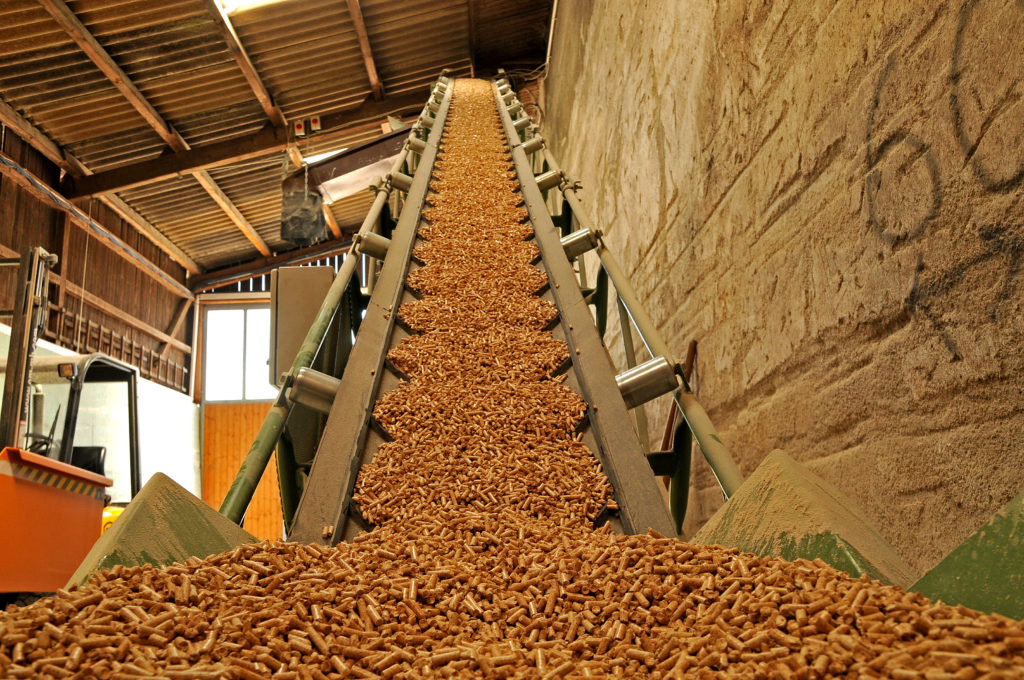
It was May of 2014 and Charlie Niebling was feeling pretty good. As the wood buyer for New England Wood Pellets and a modern wood heat pioneer, he had reason to be optimistic. New England’s automated wood heat industry was finally beginning to hum.
For years, high energy prices were the driving force behind adoption of residential pellets stoves, spurring investment in wood pellet manufacturing and, concurrently, leading to the installation of hundreds of commercial wood-fired heating systems across Vermont, New Hampshire and Maine.
“By 2014 with the return of $4 a gallon heating oil and expensive propane, despite the declining price of natural gas, we had a solid core of wood heat vendors,” said Niebling, principal and partner at Innovative Natural Resource Solutions in Concord, N.H. “Companies had invested in pellet trucks (allowing automated delivery to homes and buildings). In New Hampshire alone, we had over 100 commercial and institutional pellet and chip installations in the five years prior. Basically, it was all systems go.”
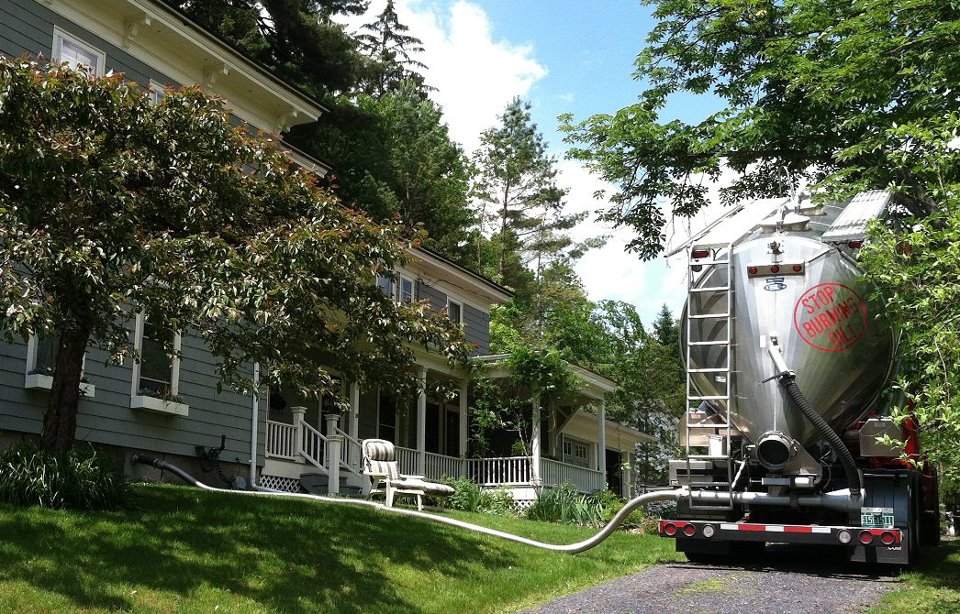
Advanced wood heat — automated wood pellet and wood chip heating systems — makes sense in New England for a host of reasons.
First, it’s cold. The region is twice as cold as either the West or the South and is almost as cold as the notoriously chilly Midwest. Second, the region has the country’s highest use of heating oil and propane, expensive fossil fuels produced outside the region. And third, the region is home to a long-standing forest products industry, woods culture and nature-based tourism.
Vermont is the nation’s leader in advanced wood heat with over 562 residential, commercial and institutional installations. That includes 73 public schools that heat with wood; 36 percent of students go to schools heated with wood. Together, these installations account for 21 percent of the state’s heating use.
According to the Biomass Energy Research Center, “the advanced wood heat industry contributed $8.6 million in sales revenue for installers, producers and distributors of pellets and woodchips in Vermont and an additional $3 million to businesses in the region.” (For more case studies, follow this link.)
“We are getting our region off imported fossil heating fuels. We have a solution that hits all the economic, environmental and social benefits,” said Niebling.
But by June of 2014, a dramatic slide in the price of fossil fuels would ultimately force Niebling and the region’s wood heat pioneers to rethink their strategy.
Energy savings — the longtime rationale of the wood heating industry — had begun to disappear. By 2017, the Energy Information Administration would declare that natural gas prices were the lowest in 20 years.
“We’re now in our third year in a row of low and stable fossil fuel heating prices,” Niebling said. “Consumers are getting fat, dumb and happy with fossil heating again. Without the operating cost advantage we enjoyed when oil and gas were expensive, it’s a lot harder sell.”
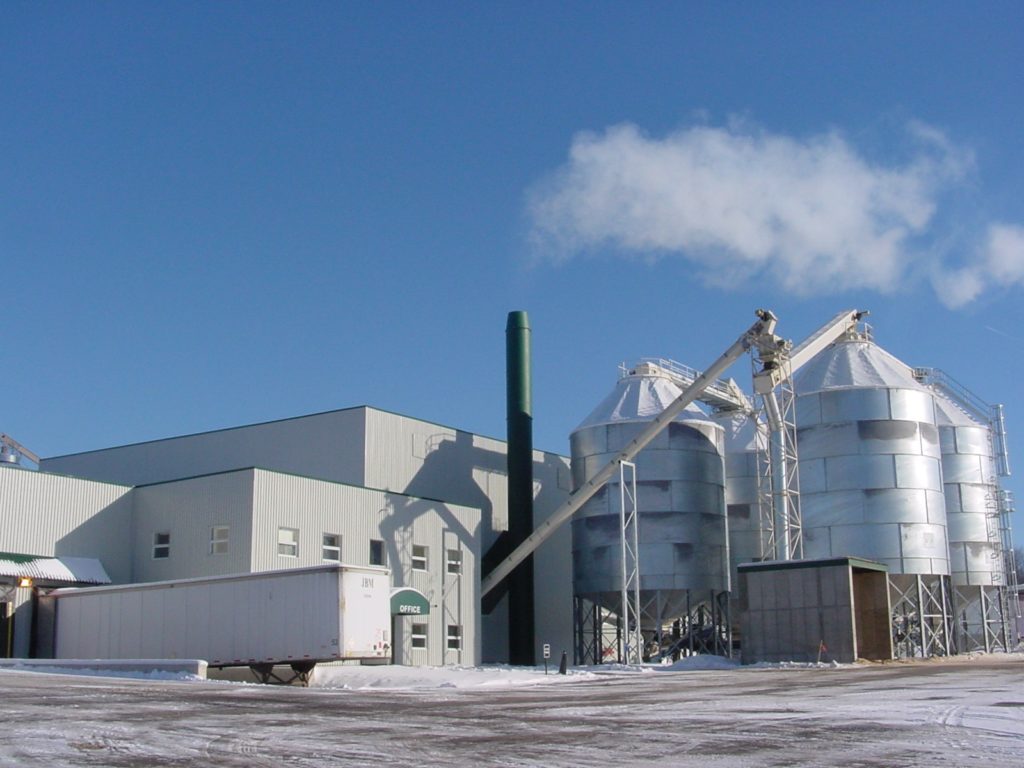
The story of modern wood heat has been more than just “switch to wood heat and save lots of money.” Wealth retention and keeping money in the local economy has long been a selling point.
“In a region where 78 cents of every dollar spent on fossil fuel leaves the region and virtually 100 percent of money spent on wood heat stays here — that’s pretty compelling,” said Maura Adams, program director at the Northern Forest Center. “That message resonates with people. They want to help the place they’re from, help their community.”
According to the Biomass Energy Resource Center, the Vermont economy retained an estimated $70 million in 2016 because the state’s residents chose to heat with wood rather than fossil fuels.
Like other regions of the country, traditional wood markets for pulp and paper have been declining in New England. More recently, biomass energy plants — high-volume consumers of low-value material — have faced stiff headwinds due to low renewable prices and declining public support.
Given the importance of forestry to the region, do consumers care about supporting markets for low-value forest products? Have they memorized the mantra of no markets equals no management? According to Niebling, most do not.
“The connection to good forestry, creating markets for low-grade wood — that’s lost on a lot of consumers,” he said. “Unless you live in the rural Northeast or you have connections in the business, most don’t care.”
For most folks, it comes down to the money.
“We talked about other values, but the strong argument was ‘and you’re going to save a bunch of money,’ ” said Adams.
Energy prices giveth and energy prices taketh away. Buffeted by forces beyond their control, Adams, Niebling and other industry advocates took stock of the new reality.
“How are we going to sell these ideas and sustain this industry when we can’t make an economic argument that says you’re going to save 50 percent on your heating bill by switching to wood heat?” Adams wondered. “That was the crisis point. What exactly are we promoting and what’s the promise we are making to consumers?”
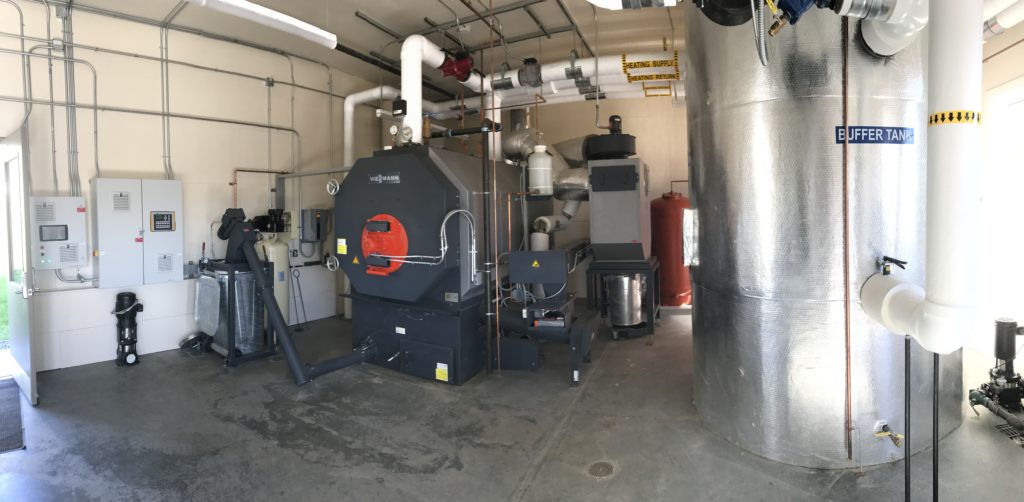
To get to the bottom of these questions, Adams and other leaders began pulling people together. They wanted to understand how advocates talked about wood energy and what would resonate with new customers.
They quickly came to three realizations.
First, the market was very weak and they needed to work together. Second, everyone used different words to describe the same thing. Third and most importantly, whether they were talking about biomass boilers, bio-energy, biomass thermal, modern wood heat or automated wood heat, most consumers had no idea what they meant.
“The lack of recognition is incredibly important. You can’t even begin to make a sale if people have no idea what you are talking about,” said Adams. “You say wood boiler and people think of a pellet stove. They don’t even know that central wood heating even exists.”
As a result of these candid dialogues, advocates began to get on the same page and use the same words. Energy savings is still part of the conversation, but it has moved from a marquee role to a supporting cast member who might make a cameo.
Their messaging shifted the one-trick pony named Lower My Energy Bill to the back of the pack and picked up a stable that included Creating Local Jobs, Getting Off Oil, Keeping Energy Dollars Local and Supporting Working Forests.
In other words, wood heat advocates moved from talking exclusively about energy savings to talking about a suite of benefits that would accrue to the building owner, the community and the forest.
Rather than just talking about dollars, they began to weave together stories, tailoring the message to the customer. They began to focus on the factors under their control.
It’s too soon to tell if this new strategy will bear fruit. The Northern Forest Center hopes to launch a new cohesive messaging campaign later this winter that will include shared resources to tell the story of modern wood-fired heat.
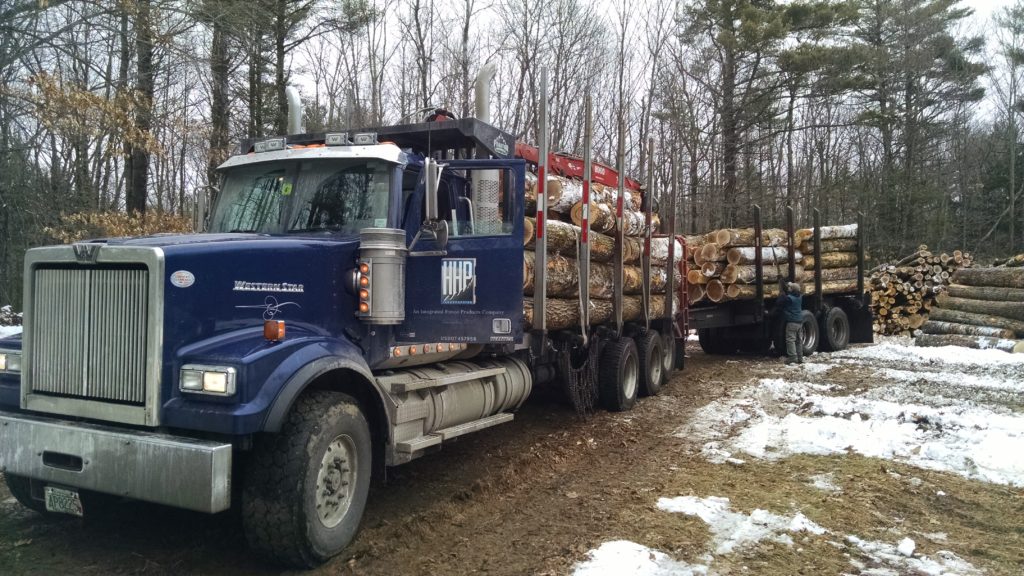
To those who have made the switch, the broader benefits of modern wood heat are apparent, despite the decrease in energy savings.
The town of Saranac, N.Y., installed an automated wood pellet boiler to heat its 7,200-square-foot town hall in 2015, with financial assistance from the Northern Forest Center.
At the time, heating oil prices were at a high of $4 a gallon and the town expected to save $1,000 a year on its energy bill. Now, heating oil prices have dropped to $2.60 a gallon, but the town remains fully supportive of its energy choice.
“We are starting to see the decline of biomass-to-electric plants and I think we’re seeing the end of that era,” said Jerry Delaney Sr., a Saranac Town Board member. “We’ve lost two paper plants in the Adirondacks now. I worry about what’s going to close next.
“The town chose wood pellet heat because, No. 1, it helps provide a market for some of the low-grade wood. A lot of folks realize the enduring benefit of wood heat is that it keeps the energy dollars local, in the region and sometimes directly in the communities.”
For Delaney, the use of wood brightens Saranac’s future. It is also a nod to the community’s roots in the forest industry.
“The forest industry made the town’s personality,” he said.
To Robert Scott, commissioner of New Hampshire Department of Environmental Services, forests play an outsized role in the state. His agency walks the talk, as they installed a wood chip boiler to heat their administrative campus in Concord.
Seventy-six percent of the state’s expansive forests are privately owned. Both the timber industry and tourism contribute significantly to the state’s economy. Scott worries that without markets, the private forests will be converted to other uses.
“Our biggest concern is keeping our working forest,” he said. “We have a lot of privately owned forest (76 percent) and those landowners need a revenue source to keep those lands as forests. Having a revenue source from forests prevents them from being converted to another use. We are very happy with our wood chip system.”
Wood heat systems, both pellets and wood chips, rely on low-value trees and residuals to make their products. Small low-value trees don’t bring the forest landowner much money at harvest time, but their removal can help keep the forest healthy.
While utilizing less volume than either pulp and paper or wood-fired power plants, the wood heat market has taken up some of the slack caused by the decline of its much-larger cousins.
“In our region, a lot of the paper mills are going out of business, said Don Hardwick, vice president of D.H. Hardwick and Sons, a timber harvesting company. “Having markets for low-value wood is essential to not just doing a timber harvest but improving the stand — taking out the low-quality wood and allowing the remaining trees to grow. These markets enable us to keep doing good forestry.”
The value proposition for wood heat is not where Charlie Niebling would like it to be. But he is undeterred. His optimism rests on the importance of homegrown renewable energy to forests, sustainability and communities.
“My optimism is based on my belief that investing your dollars locally and reducing our dependence on imported energy will only become more important,” he said. “It’s not just energy, it’s everything. A fundamental tenet of sustainability means getting more local. That plays into the favor of modern wood heating.
“You can only buy and conserve so much land. You’ve got to have free market economics on your side or you’re just shoveling sand against the tide. We’re not there yet because people haven’t yet put a value on this stuff. But it will happen because it has to happen.”
Marcus Kauffman writes about wood utilization and forestry for the Oregon Department of Forestry. He can be reached at [email protected].
[…] MARCUS KAUFFMAN – TREESOURCE · Image by WOODSY / […]